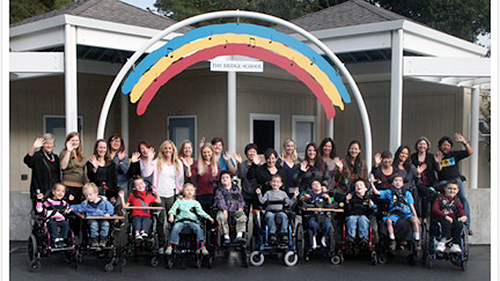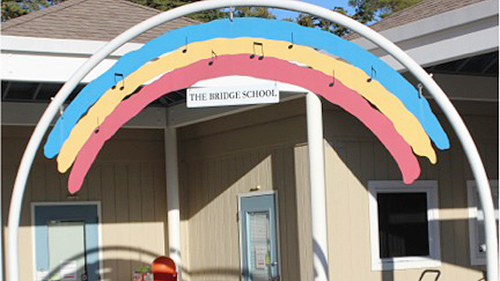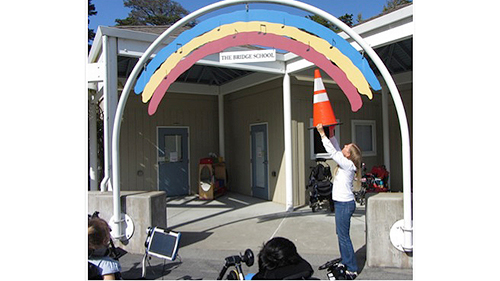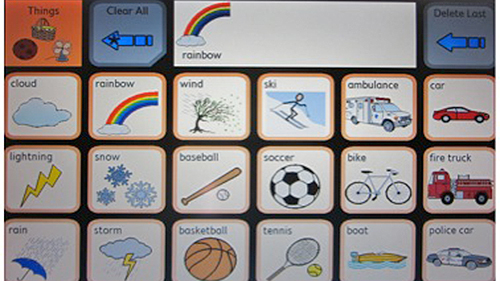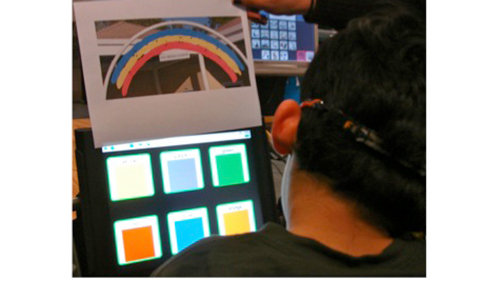For Social Studies, CVI interventions provide opportunities for students to learn specific descriptive vocabulary while allowing them access to larger concepts through real life learning activities. Giving students with CVI opportunities to use their vision while teaching them how to discuss what they see supports their overall communication goals.
Learning About Maps
Learning About Maps is a lesson that supports students learning landmarks in a large environment. At The Bridge School, students pass under a rainbow when entering the school from the playground. Most of our students with CVI were unfamiliar with the rainbow because they were unable to reference it with their vision. Many had restricted upper visual fields and were unable to attend to moderately complex visual arrays. The following considerations were addressed when planning this lesson:
- Complexity of an outside environment would be addressed by first teaching a landmark in isolation and slowly increasing the complexity of the background.
- Reduced complexity photos would be presented on a light box and salient features would be taught in the landmark providing instruction in learning new and novel visual detail.
- Distance viewing would be supported using movement to attract and direct student’s attention to upper visual fields.
